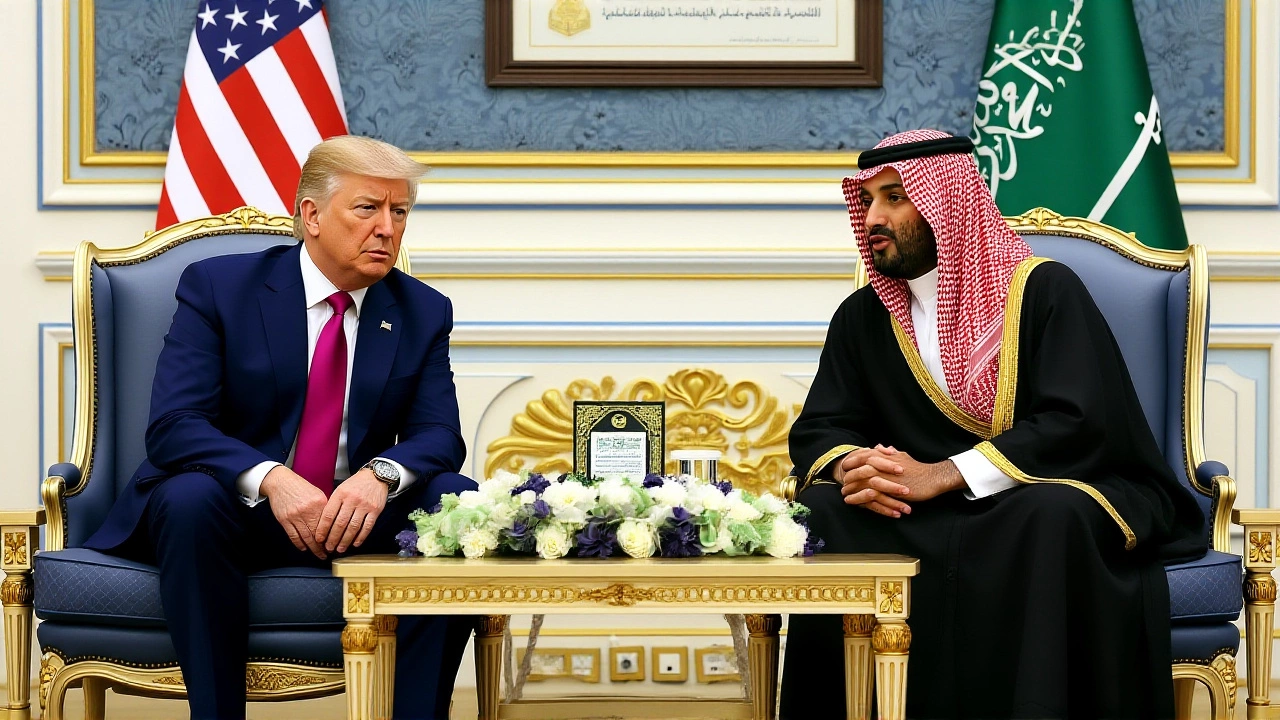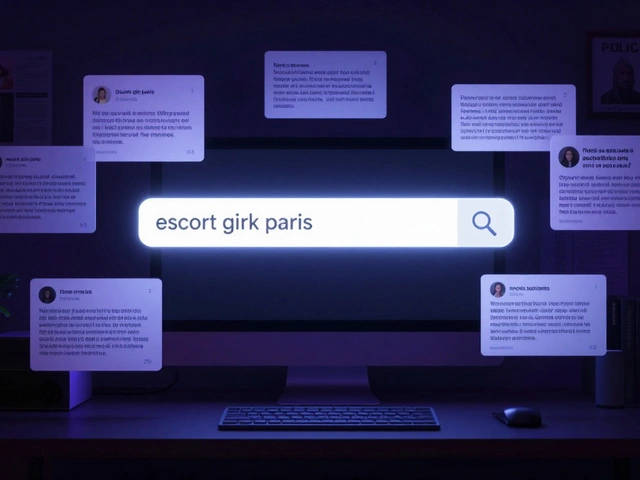On Tuesday, November 18, 2025, the White House transformed into a stage for high-stakes diplomacy as President Donald J. Trump and First Lady Melania Trump welcomed Crown Prince Mohammed bin Salman — Prime Minister of the Kingdom of Saudi Arabia — for a black-tie dinner in the East Room. The event capped a tightly choreographed 24-hour visit that signaled a deepening, if still opaque, strategic bond between Washington and Riyadh. No press releases declared concrete deals, but the atmosphere was thick with implication: $110 billion in defense contracts, AI collaboration, and the quiet possibility of Saudi-Israeli normalization hung in the air like expensive perfume.
A Calculated Visit, From Riyadh to the South Lawn
The Crown Prince’s journey began Monday, November 17, 2025, at 3:00 PM AST from Riyadh’s King Khalid International Airport. His flight, Saudi Arabian Airlines SV101, touched down at Andrews Air Force Base just before 7:20 PM EST. By the next morning, he was inside the Oval Office, seated across from Trump for a 2.5-hour bilateral meeting that reportedly covered everything from drone technology to nuclear fuel supply chains. The delegation was stacked: U.S. Secretary of State Marco Rubio, Defense Secretary Mike Pompeo, and Saudi Energy Minister Prince Abdulaziz bin Salman all sat at the table. No leaks, no leaks at all — but insiders say the tone was unusually warm, even personal.The Dinner That Spoke Louder Than Words
At 7:00 PM EST, the East Room lit up for the formal dinner. Twelve hundred square feet of gilded ceilings, 120 guests — from Lockheed Martin executives to Princess Reema bint Bandar Al Saud, Saudi Arabia’s ambassador to Washington. The menu? Filet mignon, truffle risotto, and a rare 2015 Château Margaux. But the real delicacy was the subtext. When Trump rose to toast, he didn’t mention tariffs or human rights. Instead, he said: "The friendship & blessings to America, to the Kingdom of Saudi Arabia, & to the world, stand out & will always stand out to me. We have an expression: Make America Great Again, & that’s what we’re doing. I just want to thank you for being a very big part of it." It was a carefully curated moment. No mention of Jamal Khashoggi. No questions about Yemen. Just a shared vision — one built on oil, weapons, and mutual distrust of Iran. The Crown Prince, for his part, offered only smiles and nods. His official statement, issued by the Royal Court of Saudi Arabia, called the visit "an official working visit," a diplomatic euphemism that often means "we’re not saying what we’re really doing."
Why This Matters: .8 Billion and Counting
The numbers tell a story the speeches avoid. Bilateral trade between the U.S. and Saudi Arabia hit $35.8 billion in the first nine months of 2025 — up 12% from last year. Saudi Arabia’s GDP, at $1.25 trillion, is growing at 4.7% — fueled by Vision 2030’s push into tech, energy, and defense. Meanwhile, the U.S. defense industry is desperate for new markets. Lockheed Martin’s F-35 sales to Saudi Arabia have been stalled since 2022 over congressional concerns. Now, those deals are back on the table — $110 billion worth, according to U.S. officials briefed on the talks. And then there’s the Israel factor. No one mentioned it publicly. But the presence of U.S. officials who’ve long pushed for Saudi-Israeli normalization — and the absence of any Saudi objections — suggests progress. The Kingdom has signaled for years it wants recognition from Washington before it opens relations with Tel Aviv. Trump, who brokered the Abraham Accords, is the only U.S. president who might pull that off.What’s Missing — And What’s Next
Here’s the thing: no joint statement. No signed MOUs. No press conference. The White House released two videos — one 2:17 long, the other 1:48 — but no policy details. That’s not an accident. It’s strategy. Both sides want to avoid backlash. Saudi Arabia doesn’t want its people to see it as capitulating to the U.S. on Israel. Trump doesn’t want to be accused of selling weapons to an authoritarian regime. So what’s next? The Royal Court said "ongoing coordination" will continue. That means backchannel calls between the National Security Council and the Saudi Royal Court. It means more visits — maybe by Secretary Pompeo to Riyadh next month. It means the Pentagon quietly preparing contracts for THAAD missile batteries and F-35s. And it means the State Department quietly drafting a framework for Saudi-Israeli talks — with no fanfare, no deadlines, just quiet momentum.
A 95-Year Relationship, Reinvented
This visit marked the 95th anniversary of formal U.S.-Saudi ties, established May 1, 1931. Back then, it was oil for security. Now, it’s AI, nuclear energy, and drone tech for stability. The old deal — American protection for Saudi oil — still exists. But it’s layered now with something more complex: a shared interest in containing Iran, dominating the future of energy, and reshaping the Middle East without the U.S. footing the entire bill. The Crown Prince left at 9:45 PM EST on Marine One, bound for Andrews. No one waved flags. No crowds cheered. But inside the West Wing, aides were already drafting the next move. This wasn’t a photo op. It was the quiet beginning of a new chapter.Frequently Asked Questions
Why didn’t the White House announce any agreements after the dinner?
The absence of formal announcements reflects a deliberate diplomatic strategy. Both the U.S. and Saudi Arabia prefer to avoid public backlash — the U.S. from human rights critics, Saudi Arabia from domestic and regional opponents of closer ties with Israel. Instead, negotiations are being advanced through backchannels, with contracts and technical agreements likely being drafted behind closed doors. The White House confirmed "ongoing coordination," suggesting finalized deals may emerge weeks or months later.
What role did AI and nuclear energy play in the talks?
AI and nuclear energy were central to the agenda, tied to Saudi Arabia’s Vision 2030 goals. Discussions reportedly included U.S. firms like Boeing and NEOM collaborating on AI-driven infrastructure for Saudi cities and potential U.S. support for peaceful nuclear energy development. While no uranium enrichment deals were confirmed, the U.S. is reportedly exploring a "nuclear cooperation framework" that would allow Saudi Arabia to develop civilian nuclear power under strict safeguards — a major shift from past U.S. policy.
How does this visit compare to past Trump-Saudi summits?
This was the 15th meeting between Trump and Crown Prince Mohammed bin Salman since 2017 — more than any other U.S. president has had with a Saudi leader. Unlike earlier summits, which focused heavily on arms sales and oil prices, this visit emphasized long-term strategic alignment: AI, defense integration, and regional diplomacy. The tone was notably warmer, with Trump personally praising the Crown Prince’s leadership — a marked contrast to past criticism over human rights. The lack of public controversy also suggests both sides have learned to manage optics better.
Could this lead to Saudi Arabia normalizing relations with Israel?
The possibility is stronger now than at any point since 2020. While no formal announcement was made, the presence of senior U.S. officials known to support the initiative — and the absence of Saudi objections — signals readiness. Riyadh has long demanded U.S. security guarantees and nuclear cooperation before normalizing ties. Trump’s personal relationship with the Crown Prince, combined with the defense deals discussed, may be the key that unlocks this door — quietly, without fanfare, and likely after the 2026 midterm elections.
What’s the significance of the $110 billion in defense contracts?
That figure represents the cumulative value of pending U.S. arms sales to Saudi Arabia, including F-35 fighter jets, THAAD missile defense systems, and advanced drone technology. These deals have been stalled since 2022 due to congressional objections over Yemen and human rights. If approved, they’d be the largest arms package since the Reagan era. For U.S. defense contractors, it’s a lifeline; for Saudi Arabia, it’s about deterrence against Iran. The dinner likely signaled Trump’s willingness to bypass congressional hurdles — a move that could reignite debate in Washington.
How is the public reacting to this visit in the U.S. and Saudi Arabia?
In the U.S., reactions are polarized: conservatives applaud the strong alliance, while progressives condemn the lack of accountability on human rights. In Saudi Arabia, state media praised the visit as a "historic milestone," but social media saw muted public response — many citizens remain skeptical of closer ties with Israel and wary of U.S. influence. No large protests occurred, suggesting the government has successfully managed domestic messaging. The lack of leaks indicates tight control over the narrative on both sides.




Write a comment